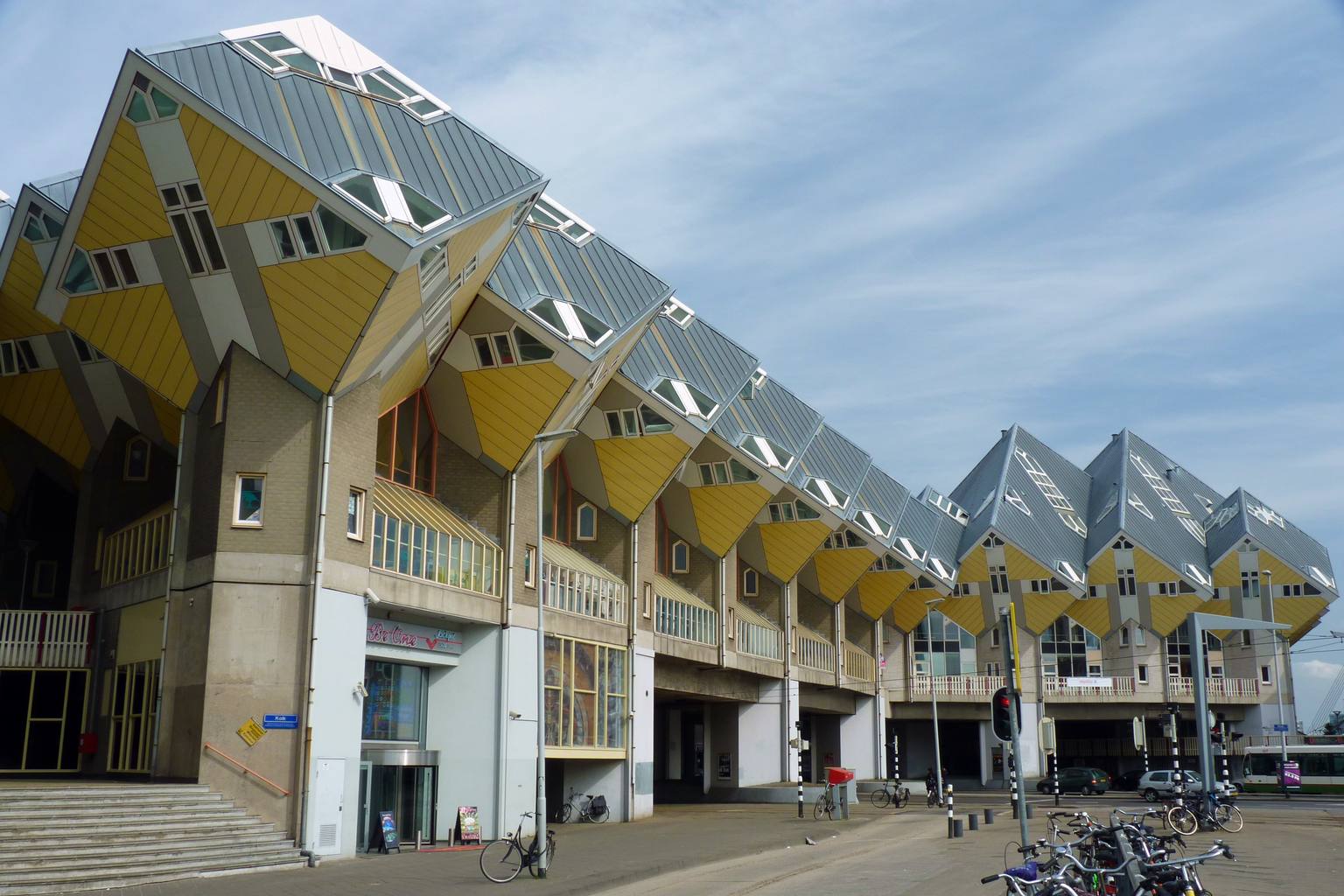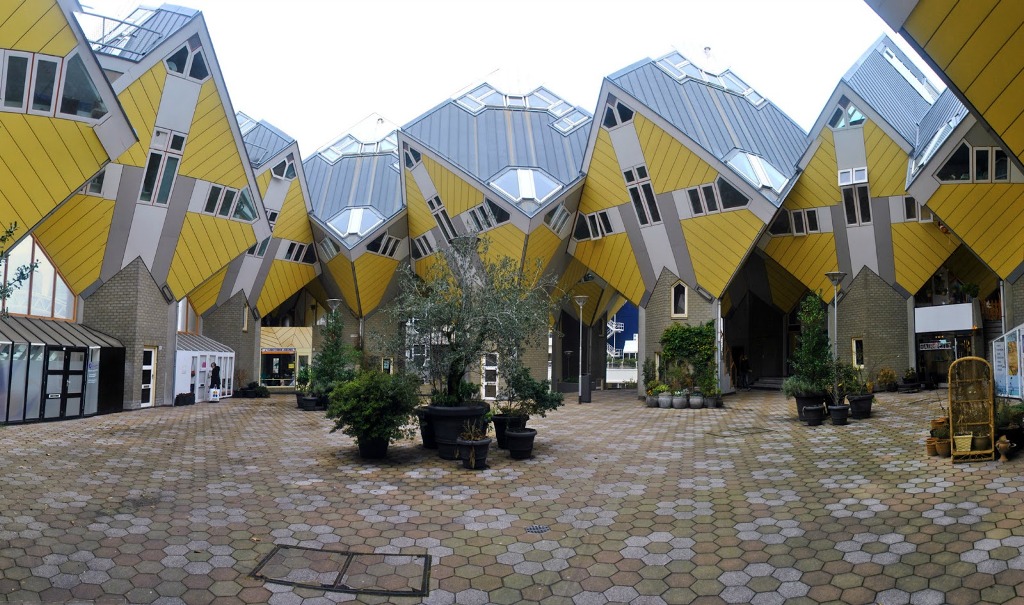Main author
Michael BrooksCube Houses
See the Unusual building design of the week series here.
The Cube (or Cubic) Houses are a series of unusual house design located in Rotterdam, Netherlands. They were conceived and constructed in the 1970s by architect Piet Blom as a response to the request from town planners for housing to be built on top of a pedestrian bridge. Blom had already built similar houses in the town of Helmand and so chose to repeat the design in Rotterdam.
Blom intended that the triangular peak of each of house would represent the top of a tree, with the asymmetrical design of the 40 cubic houses connected together representing an abstract forest.
The cubes comprise concrete floors and pillars and wooden framing, and sit tilted on a hexagonal base. The interior of the houses are divided into three levels accessed by a narrow staircase.
The walls and windows are angled at 54.7 degrees which provides good views of the surrounding area. However, the houses have been criticised for their lack of available space as, despite a total area of 100 sq. m, the angled structure means that only 25 sq. m is actually usable.
[edit] Find out more
[edit] Related articles on Designing Buildings Wiki
- Building of the week series.
- Cabin Straumsnes, Norway
- Calakmul Corporate Building, Mexico.
- Dunmore Pineapple.
- Fallingwater.
- Futuro House.
- Gentle Genius.
- Habitat 67.
- House in the Orchard.
- Loyly, Finland.
- Ministry of Transportation Building, Georgia.
- Nakagin Capsule Tower.
- Unusual building design of the week.
- Upside Down House, Poland.
- Waldspirale.
- Wikkelhouse.
- Y House.
Featured articles and news
RTPI leader to become new CIOB Chief Executive Officer
Dr Victoria Hills MRTPI, FICE to take over after Caroline Gumble’s departure.
Social and affordable housing, a long term plan for delivery
The “Delivering a Decade of Renewal for Social and Affordable Housing” strategy sets out future path.
A change to adoptive architecture
Effects of global weather warming on architectural detailing, material choice and human interaction.
The proposed publicly owned and backed subsidiary of Homes England, to facilitate new homes.
How big is the problem and what can we do to mitigate the effects?
Overheating guidance and tools for building designers
A number of cool guides to help with the heat.
The UK's Modern Industrial Strategy: A 10 year plan
Previous consultation criticism, current key elements and general support with some persisting reservations.
Building Safety Regulator reforms
New roles, new staff and a new fast track service pave the way for a single construction regulator.
Architectural Technologist CPDs and Communications
CIAT CPD… and how you can do it!
Cooling centres and cool spaces
Managing extreme heat in cities by directing the public to places for heat stress relief and water sources.
Winter gardens: A brief history and warm variations
Extending the season with glass in different forms and terms.
Restoring Great Yarmouth's Winter Gardens
Transforming one of the least sustainable constructions imaginable.
Construction Skills Mission Board launch sector drive
Newly formed government and industry collaboration set strategy for recruiting an additional 100,000 construction workers a year.
New Architects Code comes into effect in September 2025
ARB Architects Code of Conduct and Practice available with ongoing consultation regarding guidance.
Welsh Skills Body (Medr) launches ambitious plan
The new skills body brings together funding and regulation of tertiary education and research for the devolved nation.
Paul Gandy FCIOB announced as next CIOB President
Former Tilbury Douglas CEO takes helm.
UK Infrastructure: A 10 Year Strategy. In brief with reactions
With the National Infrastructure and Service Transformation Authority (NISTA).

























